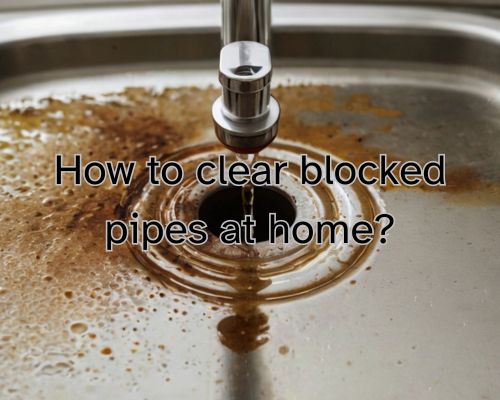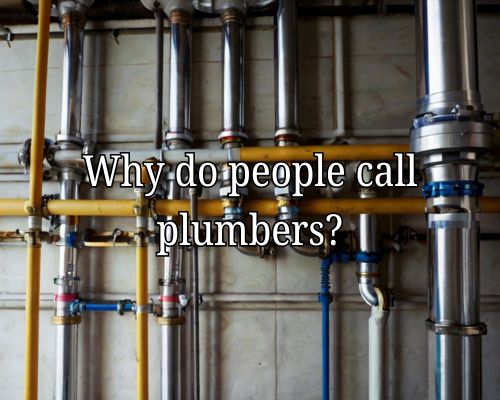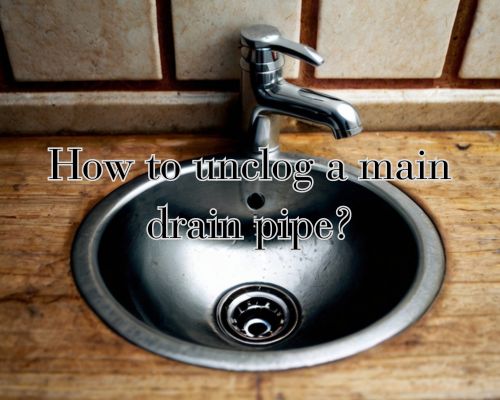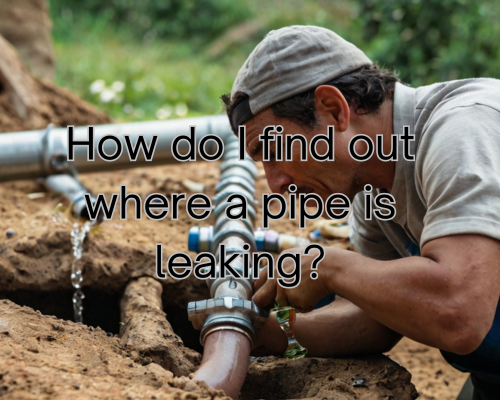If you’re a homeowner, you may have heard the term “main drain pipe” before. But what exactly is it, and what role does it play in your plumbing system? Let us know it with Dean Owens of Plumber Warragul.

In short, the main drain pipe is the primary channel that carries wastewater from various fixtures in your house to the municipal sewer system or a septic tank.
Understanding the main drain pipe is crucial for homeowners, as it provides insights into the infrastructure that supports a functional plumbing system and protects health and safety.
Each element of the house drainage system plays a crucial role, contributing to the overall effectiveness of the system.
From the drain trap to the branch drain and onward to the main drain, each component must be properly installed and maintained to ensure proper function.
In this article, we’ll take a closer look at the main drain pipe in a house, exploring its function, components, and common issues that homeowners may encounter.
Whether you’re dealing with a clogged drain or simply want to learn more about your plumbing system, this guide will provide you with the knowledge you need to keep your house’s drainage system running smoothly.
Understanding the Main Drain System
The main drain system is an essential component of any house plumbing system, responsible for the efficient and safe removal of used water and sewage from your home.
Understanding the components, function, and maintenance of the main drain system is crucial for homeowners to prevent water damage and ensure the longevity of their plumbing system.
Components of the Main Drain System
The main drain system consists of several interconnected components that work together to remove wastewater from your home.
The primary components include the main sewer line, branch drain lines, traps, and vents.
The main sewer line is the primary pipe that carries wastewater from your home to the public sewer or septic tank.
Branch drain lines are connected to each fixture drain, such as sinks, toilets, and showers, and lead to the main sewer line.
Traps are U-shaped pipes that prevent sewer gases and odors from entering your home. Vents are pipes that allow air to enter the drain system, preventing suction and allowing wastewater to flow freely.
The Role of Gravity and Pressure in Drainage
Gravity and pressure play a crucial role in the drainage of wastewater from your home.
Gravity is responsible for the flow of wastewater from higher to lower elevations, while pressure is responsible for pushing wastewater through the pipes and out of your home.
The main sewer line is typically installed with a slope of 1/4 inch per foot to ensure that wastewater flows freely.
Meanwhile, the branch drain lines are installed with a slope of 1/8 inch per foot to ensure that wastewater flows towards the main sewer line.
Common Issues and Maintenance
Common issues with the main drain system include blockages, clogs, leaks, and flooding.
Blockages and clogs can occur when foreign objects, grease, or other materials accumulate in the pipes and prevent wastewater from flowing freely.
Meanwhile, leaks can occur when pipes corrode or crack, allowing wastewater to seep into your home.
Lastly, flooding can occur when the main sewer line becomes clogged or overwhelmed with wastewater, causing sewage to back up into your home.
To prevent these issues, regular inspections and maintenance are necessary.
It is recommended to have a plumber like Plumber Warragul inspect your main drain system every two years to check for blockages, leaks, and other issues.
Additionally, regular drain cleaning can help prevent blockages and clogs.
If you hear gurgling noises or notice slow drainage, it may be a sign of a blockage or clog and should be addressed promptly.
Planning and Installation of Drainage Systems
When planning and installing a drainage system for your house, there are several factors you need to consider. In this section, we’ll go over some of the key design considerations, as well as regulations and inspections you need to be aware of when connecting to municipal systems or septic tanks.
Design Considerations for Effective Drainage
Effective drainage is essential to prevent water damage to your property and maintain a healthy living environment.
When designing your drainage system, you need to consider the following:
- The slope of the land: The slope of the land will determine the direction and flow of water. You need to ensure that your drainage system is designed to accommodate the natural flow of water and prevent water from pooling in low-lying areas.
- Soil type: The type of soil on your property will affect the absorption rate of water. If you have heavy clay soil, you may need to install a soakaway to prevent water from pooling on the surface.
- Water fixtures: You need to consider the location of sinks, toilets, and other water fixtures when designing your drainage system. Fixture drains should be connected to the main drain pipe using PVC pipes to prevent leaks and blockages.
Connecting to Municipal Systems and Septic Tanks
If you’re connecting your drainage system to a municipal sewer system or septic tank, there are regulations you need to follow.
You may need to obtain permits and have your system inspected to ensure it meets local requirements. Some key considerations include:
- Cleanouts: You need to ensure that your drainage system has cleanouts installed at regular intervals to allow for easy access and maintenance.
- Manholes: If your system is connected to a municipal sewer system, you may need to install manholes to allow for access to the main sewer line.
- Sewage treatment plant: If you’re not connecting to a municipal sewer system, you may need to install a sewage treatment plant to treat and dispose of wastewater.
Regulations and Inspections
When installing a drainage system, it’s important to comply with local regulations. You should also have your system inspected to ensure it meets safety standards.
Some key regulations and inspections include:
- Basement floor drain: You may need to install a floor drain if you have a basement. This helps prevent water damage in case of flooding.
- Network of pipes: Your drainage system should be designed to prevent cross-connections between the stormwater drain and the sewer line.
- Rainwater: If you’re collecting rainwater for reuse, you need to ensure that it’s not contaminated with sewage or other pollutants.
By considering these design factors and complying with regulations and inspections, you can ensure that your drainage system is effective and safe for your household.








